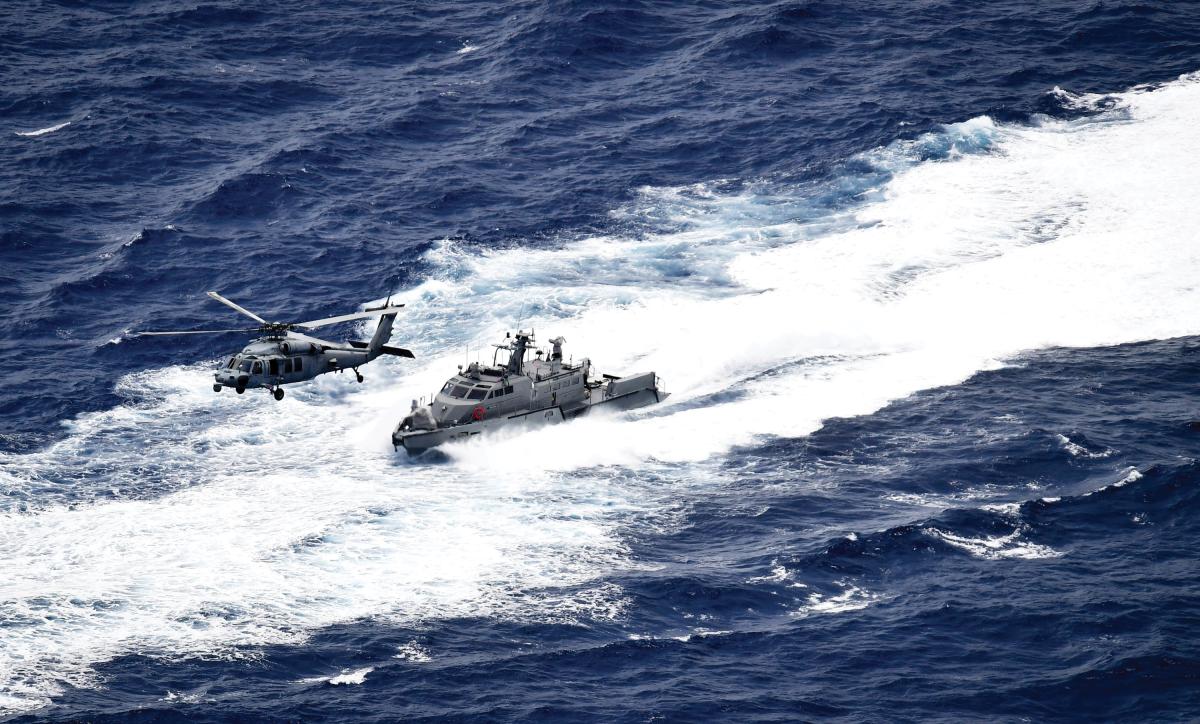A nation reliant on seaborne trade will become less capable of, and less willing to, wage war when deprived of access to such trade. Shipping flowing into and out of the first island chain feeds the Chinese economy. If armed conflict should erupt between China and the United States, the U.S. Navy should establish and maintain a blockade around the first island chain.
British naval historian Sir Julian Corbett talked about two fundamental types of blockade: tactical blockades, which involve monitoring ports and coastlines, and strategic blockades, which control chokepoints and major shipping lanes. In the China scenario, only the latter is feasible. The numerous chokepoints in and around the first island chain make China especially vulnerable to a blockade of strategic points.
Conventional warships are not well suited to blockade operations. Their advanced weapon systems and engineering plants make them maneuverable, fast, and lethal, but they also make them costly to operate and limit their on-station time.
Fast attack craft (FACs) and rotary-wing aircraft backed by conventional warships would be a better fit for blockade operations. Working in tandem with shore-based helicopters, FACs could conduct sustained boarding operations in high-traffic areas. These teams would board and inspect transiting merchants while regular naval units maintained a combat footing against potential Chinese surface force sorties or patrolling submarines.
In this chokepoint model, squadrons of FACs would be prepositioned in Singapore, Japan, and the Philippines. The crews would man the FACs, operate their weapon systems, and support other FACs conducting boarding operations. The boarders would be visit, board, search, and seizure (VBSS) teams trained to conduct opposed boardings, possibly accompanied by a Coast Guard officer and inspection team. If a suspect vessel were found to be operating counter to the blockade, it would be seized.
Tactical employment of FACs would be situationally dependent. If a ship voluntarily submitted to inspection, the VBSS team simply would be brought alongside. If the merchant were resisting or there were indications of possible resistance, a multiaxis approach might be necessary. Resistance of legitimate inspection is legal grounds for seizure.
The Peoples Liberation Army Navy (PLAN) likely would attempt to destroy the blockading force with naval, air, or even rocket forces. To counter this, FACs should be equipped with anti-ship cruise missiles (ASCMs), rockets, or even torpedoes. Within a squadron, FACs could be specialized—for example, one could carry two to four ASCMs or Griffin missiles, another could carry short-range active antiaircraft missiles, and a third boat could operate as a command-and-control hub.
The small size and low profiles of FACs would make them difficult targets, especially in a crowded strait. Their small radar cross-sections would force Chinese pilots and captains to close to verify their targets, possibly to within visual range and certainly within range of a cued attack from U.S. conventional forces. The low visual profile of FACs also would require small craft such as the Chinese maritime militia to close within visual range to cue missile shooters. The maritime militias would be outmatched in combat, and Chinese missile boats’ ASCMs would be challenged by small, stealthy FACs. A composite hull and shallow draft would make the FACs difficult targets for submarine-launched torpedoes.
Tactical behavior should mimic regional patterns. The small size of FACs would make them look like fishing boats on radar. Fishing boats cluster and loiter; following this pattern would further frustrate PLAN targeting.
By positioning its cruisers, destroyers, and even carriers outside blockaded chokepoints, the U.S. Navy could take the fight out of China’s backyard and into the street. The gradual destruction of Chinese forces attempting to break the blockade could generate the opportunity for offensive action inside the first island chain. If China were to leave the blockade in place, its economy and war industry would struggle and erode. Either scenario would push the conflict toward a conclusion advantageous to the United States.



